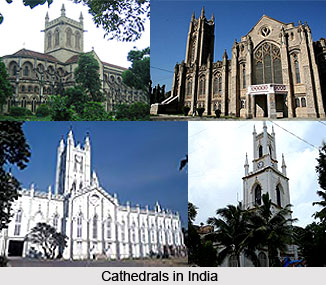 British Raj in India has always served as that part in Indian history, constituting umpteen ups and downs amongst both the community of natives and English alike. If that liberty can be taken to leave out the brutal and merciless dominance over Indians for two hundred years, the Empire had done much to introduce western civilization into eastern society. Beginning from the British East India Company and flowing down to Queen Victoria`s rule for the rest of the years and finally ending with Lord Mountbatten, British Empire can be singled out for its various innovations in every field of work. The likes of economy, administration, society, politics, entertainment, architecture and infrastructure can be enlisted under some of the few titles that the imperialists had grounded onto the Indian sub-continent. In order to make the English civilisation comfortable for day-to-day existence, the architectural aspect was perhaps the most improved and sophisticated amongst all other groups. In this context comes the phase of cathedrals built throughout colonial rule. British cathedrals in India amount to several in number, which still stand to this day with their glory and pomp.
British Raj in India has always served as that part in Indian history, constituting umpteen ups and downs amongst both the community of natives and English alike. If that liberty can be taken to leave out the brutal and merciless dominance over Indians for two hundred years, the Empire had done much to introduce western civilization into eastern society. Beginning from the British East India Company and flowing down to Queen Victoria`s rule for the rest of the years and finally ending with Lord Mountbatten, British Empire can be singled out for its various innovations in every field of work. The likes of economy, administration, society, politics, entertainment, architecture and infrastructure can be enlisted under some of the few titles that the imperialists had grounded onto the Indian sub-continent. In order to make the English civilisation comfortable for day-to-day existence, the architectural aspect was perhaps the most improved and sophisticated amongst all other groups. In this context comes the phase of cathedrals built throughout colonial rule. British cathedrals in India amount to several in number, which still stand to this day with their glory and pomp.
Commencing from the basic Presidency towns comprising Bengal, Bombay and Madras, British cathedrals in India started branching out gradually to other villages and cities, not leaving out the mofussils (a town smaller than a city, with its own municipality). Architects were shipped in huge numbers from England to erect masterpieces, who then replaced the amateur men being trained for building. The Company rule which was brought to an end after the Sepoy Mutiny(1857) in 1858, holds supreme importance here, which later witnessed massive masonry work for constructing cathedrals. Borrowing from several erstwhile European architects and their fashion of architecture, British cathedrals in India started to shoot their spires up, touching the sky. The kinds of architectural fashion that prevailed primarily were: Gothic, Palladian, Ionic, Indo-Saracenic, or the various other colonnaded halls, predominating every nook of a city or town.
With the mind-boggling course and path of British architecture in India that had been built, it can perhaps only be assimilated into a colossal book, redefining the annals. History of British cathedrals in India thus encompasses the periods and stages within which these structure were built, almost always with solemn financial and governmental aid. The governor-generals had made it a point that Christianity was widely distributed within the country, to make people aware about the religion even more consciously. The legendary cathedrals, for instance, St. Thomas` Cathedral, Mumbai or St. Paul`s Cathedral, Kolkata defy every human capability for their exquisiteness and meticulous adornment for even the following years to come.





















